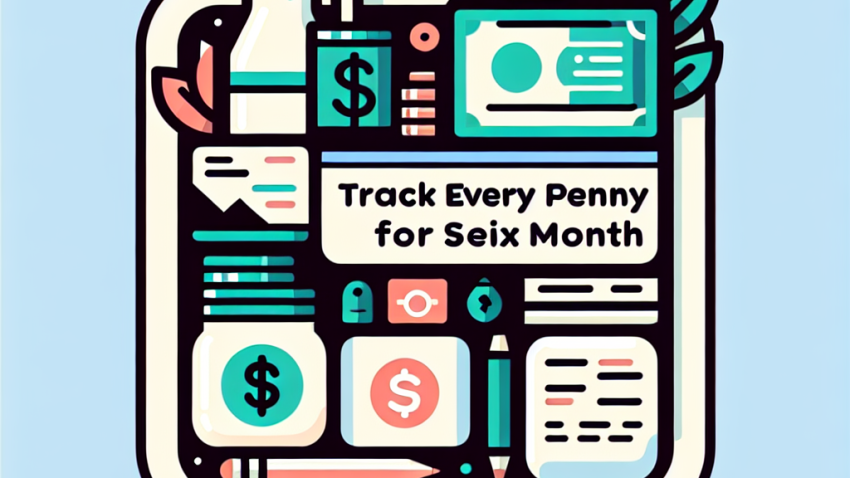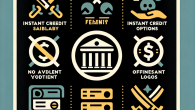
I Tracked Every Penny For 6 Months—Here’s What I Learned
How to Transition from a 9-to-5 to Financial Independence Without Losing Your Mind
Let me guess—you’re staring out the window of your office, sipping that lukewarm coffee, wondering if there’s more to life than calendar invites, passive-aggressive emails, and mandatory Zoom calls. Well, good news: there is. And no, it doesn’t require winning the lottery or becoming a crypto guru overnight.
I’m Rachel Simmons—a financial independence fangirl, DIY investor, and recovering corporate warrior. I quit my tech marketing job at 32, not because I hated it (okay, maybe a little), but because I realized I could buy back my time. Today, I’m walking you through exactly how to transition from a 9-to-5 grind to a life powered by purpose, not paychecks.
Step 1: Check Your “Why” Before You Quit
Before we talk Roth IRAs and side hustles, you need to ask yourself this: Why do I want out of this job? Is it burnout? A bad boss? Or are you genuinely craving autonomy and time freedom?
Financial independence isn’t about running away from something—it’s about building something better. Make sure you’re not escaping a short-term discomfort with a long-term leap you’re not prepared for. Get honest. Journal it if you must.
Pro tip from yours truly
- If you’re craving a break, consider a sabbatical before full-on quitting.
- Not sure if it’s burnout or boredom? Try job crafting or remote work first to test the waters.
Step 2: Know Your Numbers—Like, Really Know Them
Financial independence hinges on one basic idea: you don’t need a paycheck when your assets can pay for life. But instead of obsessing over some magic number posted on Reddit, let’s work with a personalized approach.
The 25x Rule (A Love-Hate Relationship)
The 25x Rule is a rule of thumb from the FIRE (Financial Independence, Retire Early) movement. It says you should save 25 times your annual expenses to retire comfortably. If your expenses are $40,000 per year, your “FI” (Financial Independence) number is $1 million.
But here’s the kicker: Your FI number depends on your lifestyle. Want to travel five months a year or send your kids to private school? Add that in. Planning to grow veggies and homeschool? Adjust accordingly.
Start With a Financial Inventory
- Calculate your monthly expenses (housing, food, insurance, everything).
- Track your net worth (assets – liabilities).
- Know your savings rate (the percentage of income you save).
Hint: There are tons of great budgeting tools like YNAB or Tiller if spreadsheets make your eyes twitch.
Step 3: Build an Escape Fund
Your first big win? The F-U Fund. Yes, we’re keeping it classy here—but this emergency fund gives you leverage. Call it your “walk away” fund, your runway, or your cushion, but please don’t skip this step.
I recommend aiming for 6–12 months of living expenses saved in a high-yield savings account. This isn’t the time for meme stocks or putting it all into Ethereum. You need security and access, not volatility.
This fund gives you what most people don’t have when leaving a job—peace of mind.
Step 4: Create Multiple Income Streams (Before You Quit)
You don’t need to be a millionaire to leave your job—you just need enough income to cover your bills. The magic? That income doesn’t need to come from one source.
Ideas That Actually Work
- Freelancing: Leverage your 9-to-5 skills into contract work.
- Digital Products: Courses, e-books, templates—sell your knowledge.
- Investing: Dividends, rental income, or REITs offer semi-passive income streams.
- Service Businesses: Consulting, tutoring, virtual assistance—it’s all fair game.
The dream isn’t no work—it’s work on your terms. Building this bridge income lets you leave your job without financial free fall.
Step 5: Practice Living On Less
Here’s the unsexy truth: Financial independence is 80% psychology and 20% math. The more you enjoy a simple life, the less money you need to reach FI.
Start practicing now:
- Cancel unused subscriptions (looking at you, 5 streaming services).
- Cook at home more often (bonus points for meal prepping with a glass of wine).
- Unsubscribe from email sales—you’re not saving money if you didn’t need it in the first place.
I’m not about deprivation—but trimming fat today gives you financial muscle tomorrow.
Step 6: Exit Gracefully (Don’t Burn Bridges… Unless You Want To)
Transitioning to financial independence doesn’t have to be dramatic (although I do love a good “mic drop” story). Give notice respectfully, offer to document processes, and keep those LinkedIn connections warm.
You never know when a former teammate becomes your first client—or future investor.
Step 7: Redefine Productivity and Identity
This step? It hits people the hardest. After years of identifying as “a teacher,” or “a marketing director,” leaving that role feels… weird.
You are not your job title, friend. You’re a fully-formed human being with creativity, value, and curiosity—even without a cubicle to prove it. So take the time to recalibrate. Try new routines. Explore projects you never had bandwidth for.
What to Expect Post-Exit
- A blissful 2-week honeymoon phase (long breakfasts, mid-day walks, bliss…)
- An identity wobble (“Wait, who am I without deadlines?”)
- Newfound energy to build your next chapter—just hang in there.
The Bottom Line: You Don’t Have to Make the Leap Alone
Look, I didn’t get here by accident—I followed a plan, stumbled a bunch, cried (once, I swear), and kept going. You can do this, too. Whether you do a soft transition with part-time work or go all-in with early retirement, the road to financial independence is paved with intention, not chaos.
And if you’re looking for more resources, inspiration, or want to run your numbers with someone who gets it, I’d love to hear from you. Head over to our About Us page or shoot a message through our Contact page. I’m all ears—and spreadsheets.
You don’t need to be rich to be free. You just need a plan—and a little courage.









Leave a Reply